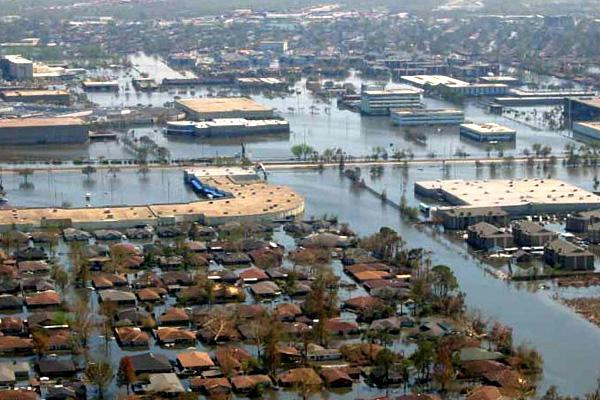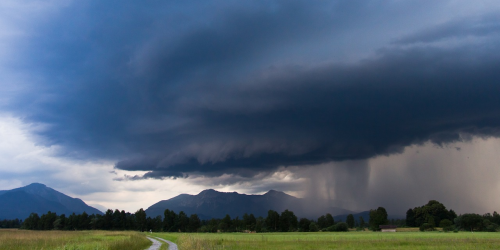NOAA’s MAPP Program is announcing 13 new two-year projects in FY19 that aim to use Coupled Model Intercomparison Project Phase 6 (CMIP6) results for improved projections of 21st century climate over the United States. The competitively-selected awards total $2.6M, including $2.4M in grants and $188K in other awards distributed over the lifetime of the projects.

Preparedness for weather extremes, brought on by changing climate conditions, depends on our ability to characterize future changes and how they will collectively affect the environment. This involves capturing the combined effect of a variety of changes in the Earth’s climate system and also adequately characterizing associated uncertainties. For example, to better understand U.S. coastal floods we need to characterize the joint effect of long-term changes in weather extremes and sea level. Furthering the understanding and modeling of such climate changes crucially underpins any substantive advancement in our predictive capabilities of future environmental conditions, as the basis of enhanced U.S. climate planning and adaptation. To assist in this effort, these 13 new projects will build on the work of CMIP6 to improve depictions of 21st century climate over the US.
CMIP is a flagship model intercomparison, simulation, and projection effort. It engages all of the major global modeling centers to run coordinated experiments to enable intercomparison of models. The data produced also undergirds many Assessment efforts including the Intergovernmental Panel on Climate Change reports as well as the National Climate Assessment. In addition to historical simulations of the climate and future projections, CMIP6 includes nearly two dozen additional Model Intercomparison Projects looking at aspects of model simulation as diverse as Cloud Feedbacks and Ice Sheets. This enormous and diverse dataset enables unprecedented focus on components of models to significantly advance the next generation of models and builds on decades of research and development in the scientific community, including at NOAA’s Office of Oceanic and Atmospheric Research (OAR) Laboratories.
CMIP6 represents an opportunity to improve the characterization of future U.S. climate and related environmental impacts, building on the latest models and deepened understanding of underpinning processes and associated uncertainties. The new projects will focus on one or more Priority Areas – (a) utilizing CMIP6 results considering the combination of major climate factors at play at national or large regional scale and/or for specific applications, such as the Blue Economy sector and underpinning ocean health; (b) addressing how models capture processes that underpin combined predicted/projected climate changes for the purpose of defining confidence in the projections; and (c) considering existing observationally-based indicators associated with the National Climate Assessment and methodologies to develop future CMIP6-based projections and associated uncertainties for those indicators. These projects will coordinate with the US Global Change Research Program and World Climate Research Program to inform future reports such as the Climate Science Special Report.
The 13 new projects funded by the MAPP Program in FY19 are:
- Sea ice variability over the Pacific sector of the Arctic Ocean driven by atmospheric circulation changes: Developing a process-based understanding of biases in CMIP6 models
- Lead Investigator: Qinghua Ding (University of California, Santa Barbara)
- Co-Investigators: Mitchell Bushuk (NOAA GFDL)
- Physically-based Evaluation of CMIP6 Hydrologic Projections for the Western United States
- Lead Investigator: Joseph Barsugli (NOAA ESRL)
- Co-Investigators: Ben Livneh (University of Colorado Boulder)
- Integrating models, paleoclimate, and recent observations to develop process-level understanding of projected changes in US drought
- Lead Investigator: Benjamin Cook (NASA GISS)
- Co-Investigators: Katherine Marvel (NASA GISS), A. Park Williams (Columbia University)
- Assessing the predictability and probability of 21st century rain-on-snow flood flood risk for the conterminous U.S.
- Lead Investigator: Keith Musselman (University of Colorado Boulder)
- Co-Investigators: Ethan Gutmann (NCAR), Flavio Lehner (NCAR), Angeline Pendergrass (NCAR)
- Assessing CMIP6 combined projections of changing sea levels and enhanced extreme rainfall events for determining coastal flood risks in the U.S.-affiliated Pacific Islands
- Lead Investigator: Matthew Widlansky (University of Hawai’i at Mānoa)
- Co-Investigators: H. Annamalai (International Pacific Research Center), Philip Thompson (UH Sea Level Center), John Marra (NOAA/NCEI), William Sweet (NOAA/NOS/CO-OPS)
- Understanding and Quantifying Uncertainties Related to Counteracting Influence of Projected Reduction in Temperature Gradient and Increase in Atmospheric Moisture on Winter Storms and Cool Season Flooding
- Lead Investigator: Edmund Kar-Man Chang (Stony Brook University)
- Coupled Climate Stressors along the West Coast of North America: Drought, Marine Heat Waves, HABs, and Hypoxia
- Lead Investigator: Ryan Rykaczewski (NOAA Pacific Islands Fisheries Science Center)
- Co-Investigators: Michael Jacox (NOAA Southwest Fisheries Science Center), Marisol García-Reyes (Farallon Institute), Bryan Black (University of Arizona), Steven Brograd (NOAA Southwest Fisheries Science Center),William Sydeman (Farallon Institute), Charlie Stock (NOAA GFDL)
- Identifying Varying Patterns of Combined Change over the 21st Century with Neural Networks
- Lead Investigator: Elizabeth Barnes (Colorado State University)
- Co-Investigators: Charles Anderson (Colorado State University), Imme Ebert-Uphoff (Colorado State University)
- Future changes in the frequency of winter snowstorms and their impact on snowfall and snow water equivalent
- Lead Investigator: Rachel McCrary (NCAR)
- Co-Investigators: Melissa Bukovsky (NCAR), Colin Zarzycki (Pennsylvania State University)
- Storylines of Regional and Seasonal Climate Change in the United States in the 21st Century
- Lead Investigator: Kevin Grise (University of Virginia)
- Indicators for the Detection and Attribution of Concurrent and Compound Extremes in CMIP6 Climate Model Simulations
- Lead Investigator: Amir AghaKouchak (University of California, Irvine)
- CMIP6 projections of Arctic indicators and midlatitude linkages
- Lead Investigator: John Walsh (University of Alaska, Fairbanks)
- Co-Investigators: Muyin Wang (University of Washington), James Overland (NOAA PMEL)
- Natural and anthropogenic influences of heat waves and droughts over the United States: variability, predictability, and future projections
- Lead Investigator: Hosmay Lopez ( Columbia University)
- Co-Investigators: Benjamin Kirtman (University of Miami)
The projects will be coordinated and organized by a new NOAA MAPP Task Force, being led by Ben Livneh (University of Colorado), and co-led by Angie Pendergrass (NCAR), Kate Marvel (Columbia University/NASA GISS), and Ryan Rykaczewski (NOAA Pacific Islands Fisheries Science Center).





